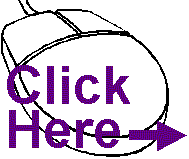 When you’re running a website, whoever is surfing it is staring at the screen…but where? One of the biggest questions for website designers is, “Where are the user’s eyes looking?” Where do your eyes go when you read articles on the Web? What do you notice and what do you miss?
When you’re running a website, whoever is surfing it is staring at the screen…but where? One of the biggest questions for website designers is, “Where are the user’s eyes looking?” Where do your eyes go when you read articles on the Web? What do you notice and what do you miss?
Well, we’ve got some answers for you, because this topic has been studied. Turns out that the upper left quarter of the screen gets the most attention, according to the Eyetrack III research of The Poynter Institute, the Estlow Center for Journalism & New Media, and Eyetools. But that’s not all. There’s more to it than that.
People’s eyes have some very common behaviour patterns. It probably has to do with our hunter-gatherer ancestry.
First, we do reconnaissance, or “recon” as the military calls it. Users’ eyes flick over the entire screen at whatever draws their attention. And what draws it most?
Well, the first hot spots are headlines, photo captions, subheadings, links, menu items and the logo on the page-doesn’t matter if it’s a good logo or a bad one, people look at logos.
Then the upper left corner of the screen gets special attention, probably because that’s where people expect to find the very best stuff. And the right-hand and lower part of the page almost always gets less attention.
This is info that site developers must know: when you put your most important, vital content outside that critical upper left corner (did you notice the Ads I put there?), that important content might as well be invisible when people are making the big decision: whether to stay on your site and read more or go somewhere else.
Yes, people scan a page quickly. But scanning has a purpose: it quickly identifies to a user what they really want to read. The good news is that if you can hook them right off the bat, when they start actually reading a news story on the Web, they read a larger proportion than if they were reading that very same story in the newspaper.
Originally posted on November 6, 2006 @ 10:48 pm
